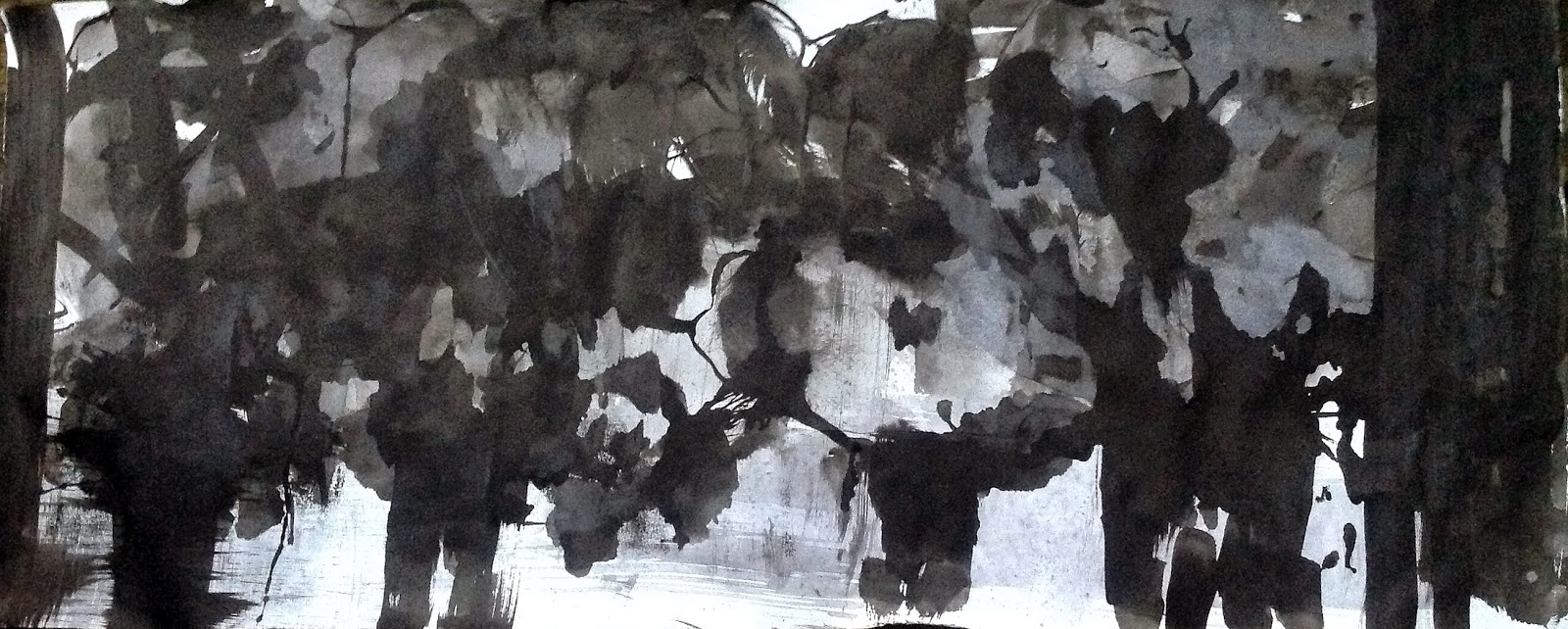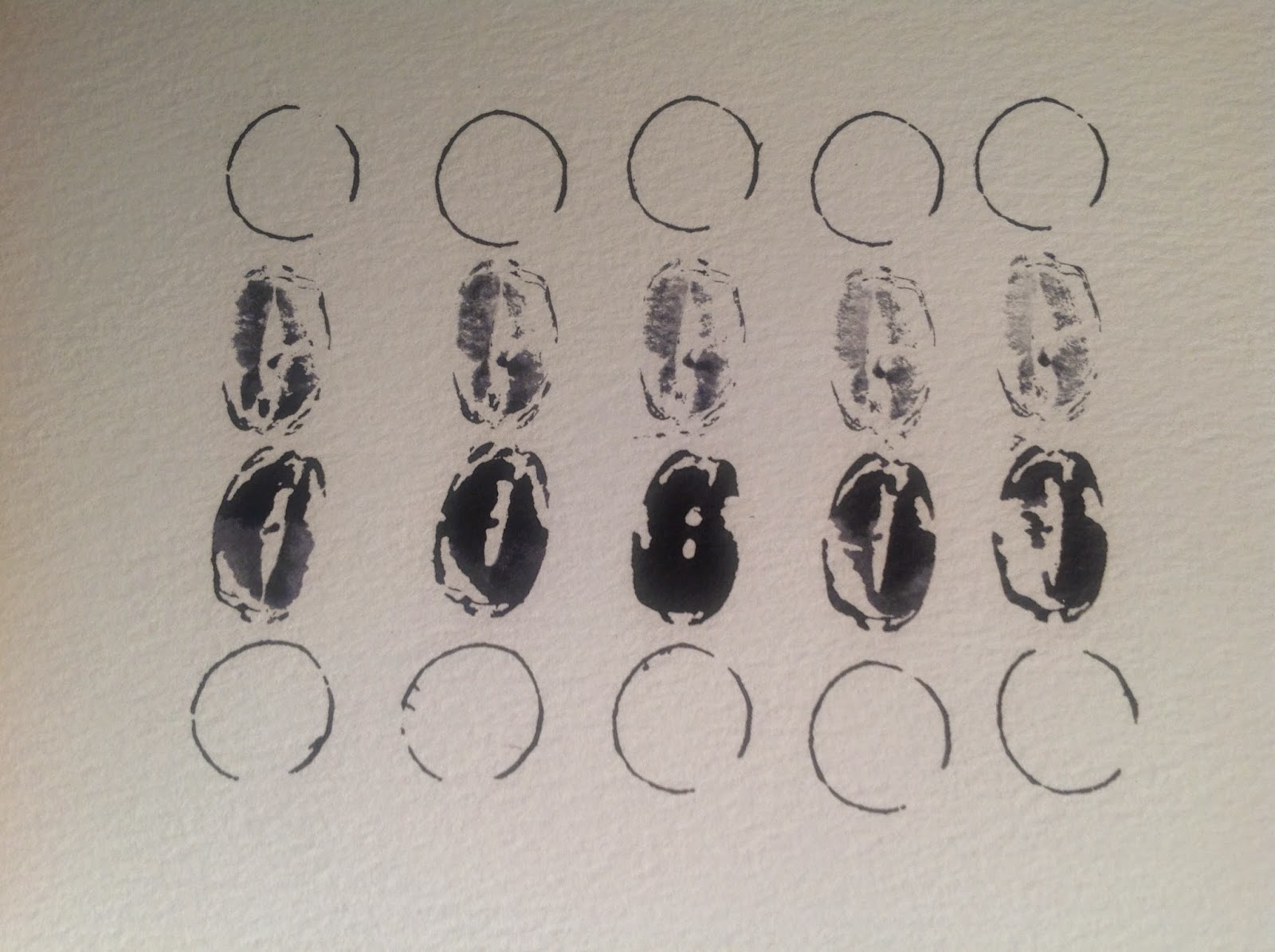Although conscious of the limited time I had decided on the format of the support and prepared a long horizontal strip of paper. Applied washes and took blind mono prints along the length and then worked further ink into the designs. Again, this produced a good range of tones and shapes, not a lot of texture, but overall it worked well as a horizontal composition but had lack of space. I felt the image was successful in portraying size and irregular shape of oak trees but felt the light was in the wrong place and overall there was very little depth to the work. I also cropped the image by 25% on the left hand side.
Below are two cropped sections from the original work
This image below is the result of drawing different size oak leaves using a cedar bark brush dipped ink. They were small images which were then cut up into various geometric shapes and collage together on one A4 paper. The paper was then cut in half and joined to present as a long horizontal piece. My initial response was that it was rather decorative but upon review I found some interesting qualities, It presents a kind of calligraphic 'tree writing',suggesting its own narrative in relation to leaves and branches of the tree. This could be developed as a long scroll with other elements of the oak tree included - acorns, flowers. The collage itself has too many dividing lines where the paper was cut and I may try to reproduce the image on one long sheet of paper
Finally, a photograph of a favourite item which I have used often to apply both oil and ink to work.This variegated wooden comb creates some wonderful marks and has now become a work of art in itself.


































